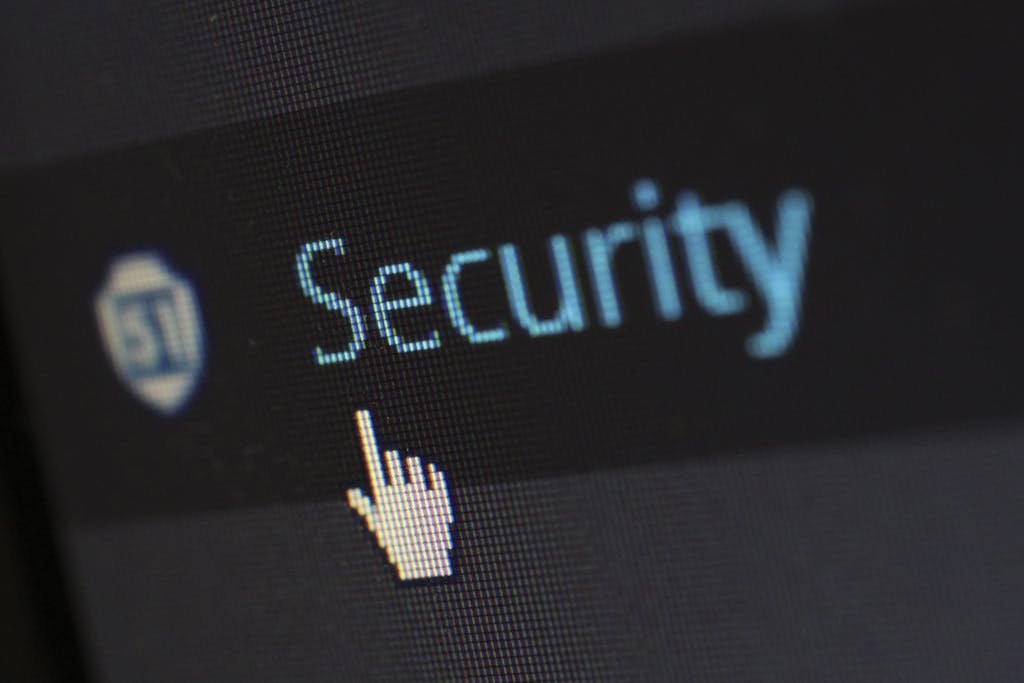10 Key NIS2 Requirements for Comprehensive Cybersecurity
Introduction to NIS2 Requirements
The Network and Information Systems (NIS2) Directive represents a significant step forward in the European Union’s efforts to bolster cybersecurity across member states. As cyber threats become increasingly sophisticated and pervasive, the need for a robust and unified approach to safeguarding network and information systems has never been more critical. The NIS2 Directive aims to address these challenges by establishing a comprehensive framework designed to enhance the resilience and security of essential services and critical infrastructure.
Central to the NIS2 Directive are ten key requirements that organizations must adhere to. These requirements are meticulously crafted to cover a wide range of aspects related to information security, ensuring that both public and private sector entities are equipped to mitigate risks and respond effectively to cyber incidents. By setting a high standard for cybersecurity practices, the NIS2 Directive seeks to create a more secure digital environment, fostering trust and stability within the European Union.
The introduction of these requirements underscores the importance of a proactive and coordinated approach to cybersecurity. The directive not only mandates technical and organizational measures but also emphasizes the need for continuous monitoring, incident reporting, and collaborative efforts among member states. This holistic approach is intended to enhance the overall security posture of the EU, making it more resilient against potential threats.
In the sections that follow, we will delve deeper into each of the ten key requirements outlined in the NIS2 Directive. From risk management and incident reporting to supply chain security and international cooperation, these requirements collectively form the backbone of a robust cybersecurity strategy. Understanding and implementing these requirements is crucial for organizations to safeguard their network and information systems effectively, ensuring compliance with the directive and contributing to a safer cyberspace for all.

Risk Analysis and Information System Security Policies
Risk analysis is a fundamental component of effective information security management under the NIS2 framework. This process involves identifying potential threats to an organization’s information systems, assessing their vulnerabilities, and determining the potential impact of these threats. Conducting a thorough risk analysis enables organizations to prioritize their security efforts and allocate resources effectively to mitigate identified risks.
A comprehensive risk analysis begins with the identification of assets that need protection, such as hardware, software, data, and personnel. This is followed by the identification of potential threats, which can range from cyber-attacks and data breaches to natural disasters and human error. Once threats are identified, the next step is to assess the vulnerabilities of the information systems. This involves evaluating the weaknesses that could be exploited by the threats, such as outdated software, unpatched systems, or inadequate access controls.
After identifying threats and assessing vulnerabilities, organizations must determine the likelihood and potential impact of each threat materializing. This risk assessment process helps in prioritizing the risks based on their severity and likelihood. Effective risk management strategies often include a combination of preventive, detective, and corrective controls. Preventive controls aim to stop threats from occurring, detective controls identify and alert to potential threats, and corrective controls mitigate the damage if a threat materializes.
In tandem with risk analysis, developing robust information system security policies is crucial. These policies provide a formalized framework for managing and protecting an organization’s information assets. Key elements of effective security policies include defining roles and responsibilities, establishing protocols for data protection, outlining incident response procedures, and setting guidelines for regular security training and awareness programs.
Best practices for policy development involve aligning with established standards and frameworks, such as ISO/IEC 27001, ensuring policies are comprehensive yet flexible to adapt to the evolving threat landscape. Regular review and updates of these policies are essential to maintain their effectiveness and relevance. Additionally, engaging stakeholders across the organization in the policy development process can enhance buy-in and compliance.
Overall, integrating robust risk analysis and well-crafted information system security policies are critical steps in achieving comprehensive cybersecurity as mandated by the NIS2 directive.
Incident Handling: Prevention, Detection, Response, Recovery, and Reporting
Effective incident handling is a cornerstone of robust information security, ensuring that organizations can swiftly and effectively manage cybersecurity incidents. The NIS2 directive underscores the importance of a comprehensive incident handling strategy that encompasses prevention, detection, response, recovery, and reporting.
Prevention is the first line of defense, involving measures to reduce the likelihood of cybersecurity incidents. This includes implementing stringent security policies, regular staff training, and deploying advanced security technologies. Proactive measures such as vulnerability assessments and penetration testing are also crucial to identify and mitigate potential threats before they materialize.
Detection is equally vital and involves continuously monitoring systems for signs of potential incidents. Utilizing sophisticated intrusion detection systems (IDS) and employing real-time monitoring tools can help in the early identification of anomalies. Timely detection allows for a quicker response, which can significantly reduce the impact of a cyber attack.
Response procedures need to be well-defined and practiced regularly. This includes having an incident response plan (IRP) in place that outlines the steps to be taken once an incident is detected. A swift and coordinated response can prevent further damage, preserve evidence, and maintain business continuity. Key components of an effective response include containment, eradication, and communication with stakeholders.
Recovery focuses on restoring normal operations and mitigating any residual risks. This phase involves data restoration, system repairs, and a thorough review of the incident to identify lessons learned. Recovery plans should be tested and updated regularly to ensure they are effective and reflect the current threat landscape.
Reporting is a critical aspect of incident handling under the NIS2 directive. Organizations must document and report incidents to relevant authorities and stakeholders. Detailed reporting helps in understanding the incident’s scope, assessing the damage, and improving future incident handling practices. Transparency in reporting also fosters trust and compliance with regulatory requirements.
Case studies of successful incident handling illustrate the practical application of these principles. For instance, a financial institution that swiftly detected and responded to a ransomware attack was able to restore operations within hours and avoid significant financial loss. Another example is a healthcare provider that, through meticulous incident response planning, managed to contain a data breach, protecting sensitive patient information.
Business Continuity Measures
Business continuity measures are integral components of comprehensive cybersecurity, ensuring that organizations can sustain operations and recover swiftly from disruptions. In the context of the NIS2 directive, these measures encompass a variety of strategies designed to maintain operational resilience and mitigate potential risks. Implementing robust business continuity measures facilitates a structured response to unforeseen events, such as cyber-attacks, natural disasters, or system failures, thereby safeguarding an organization’s critical functions.
One fundamental aspect of business continuity is the establishment of a comprehensive backup strategy. Regular data backups are crucial for protecting sensitive information and ensuring its availability in the event of a system compromise. These backups should be stored securely, both on-site and off-site, to mitigate the risk of data loss. Additionally, organizations should adopt an incremental or differential backup approach to reduce storage requirements and enhance recovery speed.
Another critical element is the development of a disaster recovery plan (DRP). A DRP outlines the procedures for restoring IT systems and data following a significant disruption. This plan should detail the roles and responsibilities of personnel, the sequence of recovery steps, and the prioritization of critical systems. Regular testing and updating of the DRP are essential to ensure its effectiveness and alignment with the evolving threat landscape.
Practical advice for creating a business continuity plan includes conducting a thorough risk assessment to identify potential threats and vulnerabilities. Organizations should also establish clear communication channels for disseminating information during a crisis. Moreover, employee training and awareness programs are vital for ensuring that all staff members understand their roles and responsibilities in maintaining business continuity.
Examples of effective strategies include implementing redundant systems and networks to provide failover capabilities, utilizing cloud-based services for data storage and applications, and establishing partnerships with third-party vendors for additional support during recovery efforts. By integrating these measures, organizations can enhance their resilience against disruptions and maintain the integrity of their operations, in line with NIS2 requirements.

Crisis Management
Crisis management is a pivotal aspect of maintaining robust cybersecurity under the NIS2 directive. Efficiently handling a cybersecurity crisis involves a well-structured approach to preparation, management, and communication. Organizations must establish a comprehensive crisis management plan to mitigate potential damage and ensure swift recovery from cyber incidents.
Leadership plays a critical role in crisis management. Designating a crisis management team led by experienced professionals is essential. This team should have a clear understanding of the organization’s information security policies and be equipped to make rapid, informed decisions. Leaders must ensure that all team members are well-versed in their roles and responsibilities, fostering a coordinated response during an incident.
Communication strategies are another cornerstone of effective crisis management. Clear, concise, and timely communication can significantly reduce the impact of a cybersecurity crisis. Establishing predefined communication channels and protocols ensures that information flows seamlessly between internal teams and external stakeholders. Regular updates should be provided to keep all parties informed about the crisis status and the steps being taken to resolve it.
Coordination with external parties, such as cybersecurity experts, law enforcement agencies, and regulatory bodies, is vital for a holistic crisis management approach. These external entities can offer valuable insights, resources, and support during a cyber incident. Establishing strong relationships with these parties before a crisis occurs can streamline collaboration and enhance the organization’s response capabilities.
Incorporating these key elements—leadership, communication strategies, and external coordination—into a crisis management plan enables organizations to effectively navigate the complexities of a cybersecurity crisis. By doing so, they align with NIS2 requirements, ensuring a resilient and secure information security framework. This proactive approach not only mitigates potential risks but also reinforces the organization’s commitment to safeguarding its digital assets.
Supply Chain Security
In the realm of information security, ensuring the integrity of the supply chain is paramount. The NIS2 directive places significant emphasis on securing relationships between entities and their direct suppliers or service providers. This approach mitigates risks that may originate from external sources, thereby fortifying overall cybersecurity measures.
The importance of supply chain security lies in its ability to prevent vulnerabilities that could be exploited by malicious actors. When third-party vendors or service providers have access to critical systems and data, any weak link in their security practices can expose the entire network to potential threats. To address this, organizations must adopt a holistic approach to assess and manage supply chain risks effectively.
One of the primary strategies for enhancing supply chain security involves conducting thorough due diligence during the vendor selection process. This includes evaluating the prospective supplier’s security protocols, compliance with regulatory standards, and history of past incidents. By ensuring that suppliers adhere to robust security practices, organizations can significantly reduce the risk of vulnerabilities being introduced into their systems.
Additionally, continuous monitoring and assessment of suppliers’ security measures are crucial. This can be achieved through regular audits, penetration testing, and requiring suppliers to provide evidence of compliance with security standards. By maintaining an ongoing dialogue with suppliers and staying informed about their security posture, organizations can promptly address any emerging risks.
Real-world examples underscore the need for vigilant supply chain security. For instance, the infamous NotPetya cyberattack in 2017 exploited vulnerabilities in a third-party software update mechanism, causing widespread disruption. Such incidents highlight the critical need for organizations to implement stringent security controls across their supply chain.
In conclusion, securing the supply chain is a vital component of comprehensive cybersecurity. By adopting proactive measures to assess and manage risks, organizations can safeguard their networks from external threats and ensure the integrity of their information security frameworks.
Security in Network and Information Systems Acquisition, Development, and Maintenance
Security in the lifecycle of network and information systems is paramount to ensure robust protection against vulnerabilities and cyber threats. From the initial stages of acquisition to ongoing maintenance, integrating security measures at each phase is essential for comprehensive cybersecurity. The NIS2 directive emphasizes the importance of embedding security practices into the entire lifecycle of information systems to safeguard against potential breaches and ensure the integrity, confidentiality, and availability of data.
During the acquisition phase, it is critical to assess the security posture of potential vendors and products. Organizations should conduct thorough due diligence, including security audits and compliance checks, to ensure that any new systems or software meet stringent security requirements. This proactive approach helps to identify and mitigate risks before they become entrenched in the infrastructure.
In the development phase, adopting secure coding practices and frameworks is crucial. By integrating security into the software development lifecycle (SDLC), developers can identify and address vulnerabilities early on. Best practices include regular code reviews, static and dynamic analysis, and employing automated security testing tools. These measures help to ensure that security is not an afterthought but a fundamental component of the development process.
Maintenance of network and information systems requires continuous monitoring and updating to address emerging threats. Regular patch management and timely updates are critical to close security gaps. Additionally, implementing a robust vulnerability management program that includes proactive scanning and remediation processes can help organizations stay ahead of potential exploits.
Practical examples of secure development practices include the use of threat modeling to anticipate potential attack vectors, adhering to secure coding standards such as OWASP guidelines, and incorporating DevSecOps principles to ensure collaboration between development, security, and operations teams. By embedding security into every stage of the system lifecycle, organizations can achieve a resilient cybersecurity posture that aligns with NIS2 requirements.
Cyber Hygiene Practices and Cybersecurity Training
Effective cyber hygiene practices are fundamental to safeguarding an organization’s information security. These involve a set of routine measures and procedures aimed at reducing the risk of cyber threats. Regular updates and patches for software and operating systems are paramount to closing vulnerabilities that cybercriminals could exploit. Organizations should establish a regimented schedule for these updates to ensure that all systems are fortified against the latest threats.
In addition to maintaining up-to-date systems, robust password policies are critical. Encourage employees to use complex passwords and multi-factor authentication (MFA) to add an extra layer of security. Password management tools can assist in securely storing and generating unique passwords, thereby minimizing the chances of unauthorized access.
Beyond technical measures, cultivating a culture of cybersecurity awareness is crucial. This can be achieved through ongoing cybersecurity training programs tailored to the various roles within the organization. Training should cover fundamental topics such as recognizing phishing attempts, safe internet browsing practices, and the importance of reporting suspicious activities promptly. By regularly updating training materials to reflect the evolving threat landscape, organizations can ensure that employees are well-informed and prepared to counteract potential cyber threats.
Interactive training methods, such as simulated phishing exercises and hands-on workshops, can significantly enhance engagement and retention of information. These practical experiences enable employees to apply their knowledge in real-world scenarios, fostering a proactive approach to cybersecurity.
Furthermore, establishing clear communication channels for reporting security incidents encourages prompt action and mitigates the impact of breaches. Regularly reviewing and refining these protocols ensures that they remain effective and responsive to emerging threats.
Ultimately, the combination of diligent cyber hygiene practices and comprehensive cybersecurity training forms the cornerstone of a resilient information security strategy. By prioritizing these elements, organizations can significantly reduce their vulnerability to cyber threats and uphold the integrity of their digital assets.

Use of Cryptography and Encryption
Cryptography and encryption are pivotal components in ensuring robust information security. Within the framework of NIS2 requirements, the use of cryptographic methods is essential for protecting sensitive information from unauthorized access and ensuring data integrity. Cryptography involves the transformation of data into a secure format that can only be deciphered by authorized individuals possessing the appropriate decryption keys.
There are various cryptographic methods, each with its unique applications and strengths. Symmetric encryption, where the same key is used for both encryption and decryption, is commonly employed for its efficiency in processing large volumes of data. Conversely, asymmetric encryption uses a pair of keys – a public key for encryption and a private key for decryption – providing enhanced security for sensitive communications, such as email exchanges and secure transactions.
Encryption is indispensable for safeguarding data during both storage and transmission. Data at rest, such as files stored on hard drives or cloud servers, must be encrypted to prevent unauthorized access. Techniques like full-disk encryption and file-level encryption ensure that even if physical security measures are breached, the data remains unreadable without the proper cryptographic keys. During data transmission, protocols like SSL/TLS are employed to encrypt information as it travels over networks, ensuring that sensitive data such as personal information and payment details are protected from interception.
Implementing best practices for cryptography and encryption is crucial. Organizations should adhere to industry standards and regularly update their cryptographic protocols to guard against emerging threats. Key management is another critical aspect, involving the secure generation, storage, and disposal of cryptographic keys to prevent unauthorized access. Regular audits and compliance checks can help maintain the integrity of cryptographic measures and ensure alignment with NIS2 requirements.
In conclusion, the effective use of cryptography and encryption is a cornerstone of comprehensive cybersecurity. By adopting robust cryptographic practices, organizations can significantly mitigate risks and protect sensitive information from potential breaches.
Human Resources Security, Access Control, and Asset Management
The integration of human resources security, access control measures, and asset management practices is paramount in maintaining robust cybersecurity protocols. A comprehensive approach to human resources security begins with thorough background checks for all employees. These checks are essential for identifying potential risks and ensuring that individuals with access to sensitive information possess the integrity and reliability necessary to uphold organizational security standards. By meticulously vetting candidates, organizations can mitigate insider threats and safeguard critical data.
Access control policies are another cornerstone of effective information security. These policies delineate the parameters of who can access specific data and under what conditions. Implementing robust access control measures ensures that only authorized personnel can interact with sensitive information, thereby reducing the risk of data breaches. This includes the adoption of multi-factor authentication (MFA), which adds an additional layer of security by requiring multiple forms of verification before granting access. Moreover, regular audits of access controls help in identifying any anomalies or unauthorized access attempts, enabling timely interventions.
Asset management is equally critical in the cybersecurity landscape. It involves the systematic administration of an organization’s assets, including hardware, software, and data. Effective asset management ensures that all assets are accounted for, tracked, and maintained throughout their lifecycle. This practice is vital for preventing unauthorized access and ensuring data integrity. By maintaining an up-to-date inventory of assets and implementing stringent control measures, organizations can protect their resources from potential cyber threats. Additionally, regular reviews and updates to asset management policies help in adapting to evolving security challenges and technological advancements.
In essence, the confluence of human resources security, access control, and asset management forms a triad of defense mechanisms that collectively bolster an organization’s cybersecurity posture. By investing in these areas, organizations can create a secure environment that safeguards sensitive information and maintains the integrity of their operations.
Multifactor Authentication and Secured Communications
Multifactor Authentication (MFA) is a critical element in reinforcing information security under the NIS2 directive. MFA enhances security by requiring users to provide multiple forms of verification before gaining access to systems and data. Typically, MFA combines something the user knows (like a password), something the user has (such as a smartphone or hardware token), and something the user is (biometric verification, like a fingerprint). This multifaceted approach significantly mitigates the risk of unauthorized access, even if one factor, such as a password, is compromised.
Secured communications encompass the protection of voice, video, and text communications within an organization. Ensuring these communications are secure is vital for maintaining the confidentiality and integrity of sensitive information. Encryption plays a pivotal role in safeguarding these communications against eavesdropping and interception. End-to-end encryption, in particular, ensures that only the communicating users can read the messages, effectively securing the communication channel from potential intruders.
Additionally, organizations must adopt best practices for implementing secured emergency communication systems. During a cybersecurity incident, clear and secure lines of communication are essential for coordinating response efforts and mitigating impacts. Utilizing dedicated communication channels that are isolated from the primary network can prevent compromised systems from jeopardizing emergency communications. Regularly testing these systems ensures they are functional and reliable when needed.
Incorporating MFA and securing all forms of communication are fundamental components of a comprehensive cybersecurity strategy. By adhering to these practices, organizations can better protect against unauthorized access and ensure the integrity of their communications, aligning with the stringent requirements outlined in NIS2. This strategic approach not only fortifies the organization’s defenses but also builds resilience against potential cybersecurity threats.
For more articles related to technology, please browse around InnoVirtuoso and find more interesting reads.







